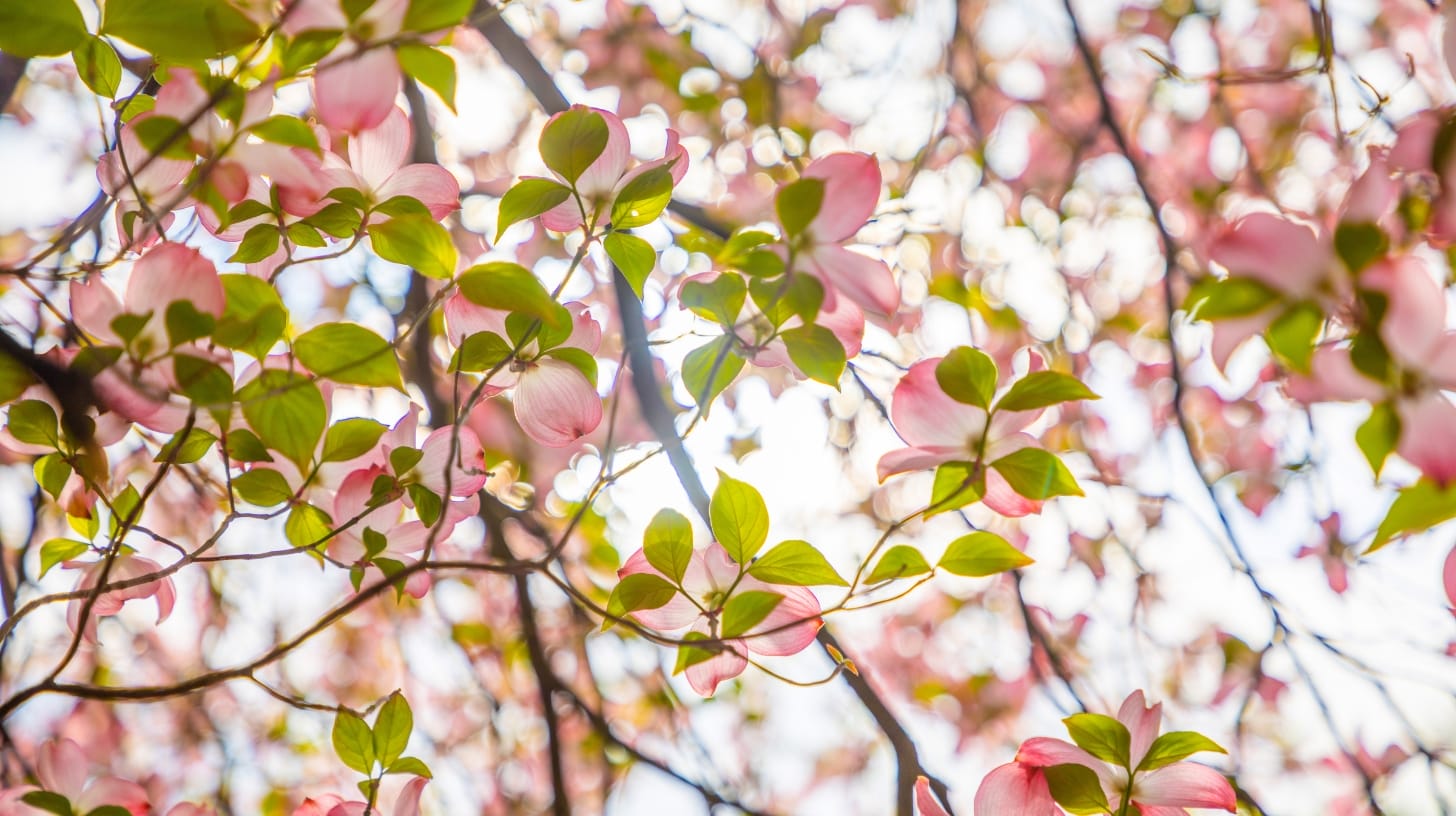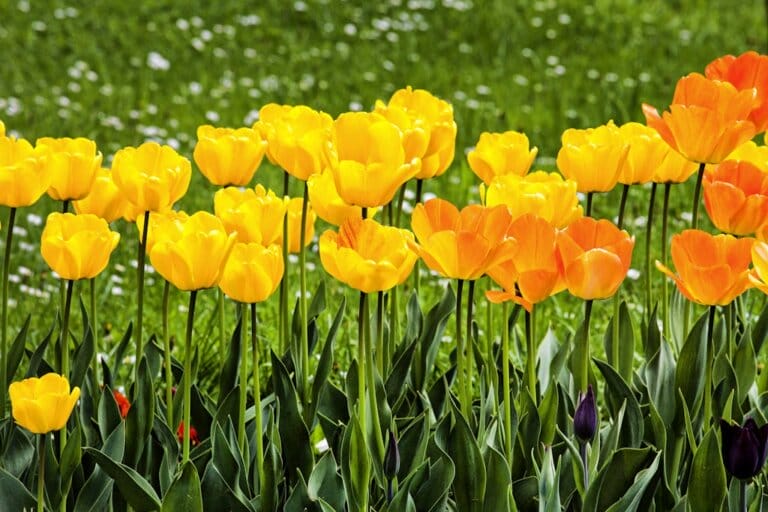Pink Feathery Flower Tree: The Beauty Of Soft Pink Flowering Trees
Experience the tranquility offered by your garden, where leaves are playfully moved by the wind and a soft lustrous glow is projected by the sunlight, creating an extraordinary feeling. Imagine this calming scenery amplified by an enthralling display of fragile pink petals blowing in the wind, offering a spellbinding burst of color with each breeze.
This is no fanciful imagery from a fairytale – it’s the fascinating beauty offered by Pink Feathery Flower Trees! These trees, revered for their breathtaking blossoms and ability to attract friendly seed spreaders such as butterflies and bees, infuse any landscape with a charming charisma.
The Pink Feathery Flower Trees create an ambiance of romance and allure that few flowering trees can rival. Let us embark on a journey exploring these mesmerizing arboreal wonders and delve into the magic they can bring into our gardens.
Key Takeaways
- Pink Feathery Flower Trees such as Persian Silk Trees or Mimosa Trees, are lauded for their breathtaking blooms of fluffy pink flowers.
- These trees flourish in full sun but can tolerate some shade and require well-drained soil with neutral to slightly acidic pH levels.
- Proper watering, temperature maintenance (60 – 80°F), and humidity control are critical for the healthy growth and beautiful bloom of Pink Feathery Flower Trees.
Understanding the Pink Feathery Flower Tree
The Pink Feathery Flower Tree is indeed a treasure, standing out with its delightful pink flowers. Aptly named, this tree promises feathery blossoms, all adorned in pink! It’s also recognized as the Persian Silk Tree or Mimosa Tree (Albizia Julibrissin).
Regardless of what name you know it by, this tree never fails to captivate with its aesthetically pleasing features.
A visual treat, this ornamental beauty comes alive when it blooms in the summer. Its branches are adorned with soft, fluffy flowers varying between shades of light and dark pink. The Pink Feathery Flower Tree basks in the sun but can adjust to some shade.
This fast-growing tree reaches impressive heights of up to 40 feet! Diverse wildlife, including birds and butterflies, also cherish this tree as much as we do, as it proffers sweet nectar for them to feed on.
Growing and Caring for the Pink Feathery Flower Tree
Cultivating and caring for the pink feathery flower tree involves considering aspects such as light, soil, water, temperature, and humidity. Here’s a helpful video on the care of this tree:
Light
Pink feathery flower trees require ample light. High sun exposure encourages more flowering. For instance, Crape Myrtle trees grow on at least six hours of full sun each day, significantly boosting their blossoms.
Sunlight is also essential for Desert-willow trees and Dwarf Poinciana trees to grow healthily. Being robust, they can withstand high heat levels and dry conditions, flourishing under full sun.
Flowering almond trees are also sun-lovers. Bright light enables these trees to produce numerous flowers, attracting beneficial insects like bees with their sweet fragrance.
For growth and health, ensure your pink feathery flower tree receives enough sunlight every day!
Soil
The soil plays a significant role in the health of the pink feathery flower tree. Ideally, the soil for these trees should be nutrient-rich and well-drained. They can grow in various soil types, ranging from acidic to alkaline soil.
However, they perform better in neutral or slightly acid soils. Add some compost into the hole when you plant the tree, which helps maintain their roots healthy and foster growth.
Water
Appropriate watering is crucial for the healthy growth and beautiful bloom of pink flowering trees. These trees require regular watering, but the quantity varies depending on the specific species and growing conditions.
Water them according to their needs and refrain from overwatering, as it could be harmful. During hot and dry seasons, pink flowering trees might require more water to thrive. Ensuring an adequate water supply is an essential part of maintaining their beauty and overall health.
Temperature and Humidity
Regulating the correct temperature and moisture levels is vital for the healthy growth and blossoming of the Pink Feathery Flower Tree. This tree favors a moderate climate with temperatures ranging from 60 to 80 degrees Fahrenheit (15 to 27 degrees Celsius).
It can manage some cold, but it’s best to protect it from freezing temperatures. Concerning humidity, this tree thrives in regions with average to high moisture levels in the air. If you live in a dry climate, you can increase the humidity by misting the leaves or placing a tray filled with water near the tree.
Alternatively, if you reside in a humid environment, ensure adequate air circulation around the tree to prevent fungal diseases. By maintaining optimum temperature and humidity conditions, you can help your Pink Feathery Flower Tree thrive and display its alluring pink flower petals.
Types of Trees with Pink Flowers
When it comes to trees with exquisite pink flowers, several fantastic options exist. The Crape Myrtle, reputed for its vibrant pink flowers blooming in late summer, is a favorite choice.
The Pink Dogwood Tree is another preference, with delicate pale pink blooms that attract butterflies and hummingbirds. The Pink Trumpet Tree stands out with its ostentatious trumpet-shaped flowers in hues of pink and purple.
Lastly, the Redbud tree and Smoke trees provides a splash of color with its deep pink blossoms and the misty aesthetics, creating a mesmerizing display in early spring.
Crape Myrtle
Crapeflower or Myrtle is a tree species with stunning pink flowers that bloom in early fall. They’re famous for their vibrant, showy blooms, inviting pollinators to your yard.
Crapeflowers are straightforward to care for and can flourish in varying soil conditions, making them an excellent addition to any garden. They prefer full sun but can handle partial shade as well.
With their eye-catching pink blooms and low maintenance requirements, Crapeflower trees are an ideal choice for those interested in sustainable gardening or looking to inject some color into their outdoor space.
Pink Dogwood Tree

The Pink Dogwood Tree is a visually spectacular and highly sought-after choice for gardens and yards. This tree, adorned with large pink flowers with white variegations, significantly enhances the look of any outdoor space.
Its smaller size makes it particularly suitable for planting under power lines. Besides improving curb appeal, the Pink Dogwood Tree also attracts pollinators.
Taking care of this tree involves offering it full sun or partial shade, well-drained soil, regular watering, and protection from extreme temperatures. In summary, the Pink Dogwood Tree is indispensable for those aiming to amplify their sustainable garden with vibrant pink blossoms.
Pink Trumpet Tree
The Pink Trumpet Tree is a fabulously ornamental tree renowned for its trumpet-shaped pink flowers. It prefers full sun and doesn’t necessitate lots of water, making it an ideal choice for sustainable gardening.
This tree is popular in tropical and subtropical regions and can add a gorgeous burst of color to any green space. To ensure vibrant blooms, it’s essential to provide the Pink Trumpet Tree with well-drained soil, regular watering, and proper pruning.
With the right care, you can revel in the showy pink flowers that are this tree’s claim to fame.
Redbud
Redbud trees are a delightful addition to any garden. They produce showy flowers in soft pink hues, which attract pollinators such as butterflies and bees. The vivid pink blooms make Redbud trees stand out among other types of trees with pink flowers.
For those focused on sustainable or organic gardening, growing a Redbud tree could be an excellent choice. Seeing these spectacular pink flowers blooming in your yard is always a rewarding experience. Furthermore, Redbud trees are renowned for being robust and easy to manage, making them perfect for both experienced and novice gardeners.
Smoke Tree

Smoke trees are entrancing ornamental trees that add a hint of mystery and distinctiveness to any garden. With their light, smoky pink color and appearance resembling a cloud, smoke trees are bound to attract attention.
These spectacular trees bloom in late summer and early fall, flaunting their lovely pink flowers before they fall off by September. Smoke trees prefer well-drained soil but can adapt to different soil types, making them flexible options for various landscapes.
They’re also drought-tolerant and can endure wet conditions, making them low-maintenance options for sustainable gardening enthusiasts. To ensure the viability of smoke trees, confirm they receive complete sun exposure as they mature to heights of up to 15 feet.
The beauty of Trees with Pink Blossoms
Trees with pink blossoms are an absolute feast for the eyes. They add a romantic and elegant touch to any green space. The vibrant pink flowers, set against the green foliage, create a striking display.
Even more, these trees attract seed spreaders like butterflies and bees, enhancing the vibrance and life in your outdoor oasis. Here are some types of trees with pink flowers that are sure to astound you:
- Crape Myrtle: These trees start blooming in early fall; their clusters of delicate pink flowers create a breathtaking spectacle in your green space. Their long-lasting blooms attract a multitude of pollinators.
- Pink Dogwood Tree: Known for its iconically large four-petal flowers, the pink dogwood tree is a hardy and versatile choice that produces stunning pale pink blossoms to brighten up the spring landscape.
- Pink Trumpet Tree: This tree’s trumpet-shaped flowers in deep pink hues add an exotic touch to any green space. Their vibrant blooms command attention, unlike any other tree.
- Redbud: Native to the eastern U.S., redbuds produce clusters of small rose-pink flowers that cover their branches in springtime. The dainty blooms of redbud trees offer a lovely contrast to their heart-shaped leaves.
- Smoke Tree: Contrary to its name, this tree produces feathery panicles covered in tiny pale purple or dark pink flowers. These unique blooms give the tree an ethereal, mist-like aura, hence the name.
These are just a few examples of the many varieties of pink-blossoming trees. Each species offers a unique charm and beauty, making them ideal additions to any garden or outdoorscape design. These trees prefer full sun or partial shade and thrive in well-draining soil conditions. With the right care and maintenance, you can enjoy their stunning displays of color for many years.
For visualization, you can watch this youtube video:
Pruning and Propagating the Pink Feathery Flower Tree
Pruning and propagating the Pink Feathery Flower Tree are significant for its growth and health. Here are some tips:
- Pruning promotes healthy growth and shapes the tree.
- Eliminate any dead or damaged branches to maintain the tree’s overall health.
- Eradicate crossing or rubbing branches to stop them from causing damage.
- Prune in late winter or early spring before the onset of new growth.
- You can propagate the tree through seed germination, stem cuttings, or grafting.
- To propagate from seeds, collect mature seeds and plant them in well-draining soil.
- When propagating from stem cuttings, take a 6-inch section with leaves and dip it in the rooting hormone before planting it in moist soil.
- Grafting involves attaching a branch from the Pink Feathery Flower Tree onto the rootstock of another tree.
Common Pests & Plant Diseases of the Pink Feathery Flower Tree
The Pink Feathery Flower Tree can be infested by pests and diseases that can impede its growth and beauty. Here are some common issues to be aware of:
- Aphids: These minuscule insects suck sap from the leaves and delicate shoots of the tree. They can cause leaf curling and stunted growth. To control aphids, you can spray the tree with a mixture of water and mild soap or introduce natural predators like ladybugs.
- Scale Insects: Scale insects are small, flat, oval bugs that cling to the branches of the tree. They drain the sap and weaken the tree. They can be removed manually or controlled with horticultural oil that suffocates them.
- Powdery Mildew: This fungal disease forms a white powdery coating on the tree’s leaves, stems, and flowers. Left untreated, it can affect the tree’s overall health. To prevent powdery mildew, ensure there is good air circulation around the tree and avoid overhead watering.
- Leaf Spot: Leaf spot is a fungal disease that causes dark spots to appear on the tree’s leaves. It can lead to defoliation if not controlled. You can prune affected branches and improve air circulation to prevent further spread.
- Root Rot: Excessive watering or poorly drained soil can cause root rot in pink feathery flower trees. This disease causes decay in the roots, leading to yellowing leaves and wilting branches. Ensure your tree is planted in well-draining soil and avoid overwatering.
- Twig Blight: Twig blight is a fungal disease that affects young twigs, leading to their death. Trim infected twigs as soon as you notice them to prevent further spread.
Are There Any White Flowering Trees That Resemble the Pink Feathery Flower Tree?
White flowering trees in spring can indeed resemble the beautiful pink feathery flower tree. While their color may differ, these trees can mirror the elegance and grace that the pink feathery flower tree displays. Their blooms bring a touch of delicacy and charm to any landscape, creating a picturesque sight during the vibrant season of spring.
Creating a Pink Oasis: Design Ideas with Pink Feathery Flower Trees
Creating a pink oasis in your garden with these lovely pink feathery flower trees can be an exciting journey. One design idea is to plant a row of Crapeflower trees along the edge of your property, creating a vibrant, flowering hedge.
Alternatively, you can plant a Pink Dogwood tree as a focal point in your yard. Its delicate, pale pink flowers will add an elegant touch to your landscape.
If your green space includes a seating area or patio, planting a Smoke Tree nearby can create a dreamy ambiance, thanks to its fluffy pink flowers. Incorporating these pink feathery flower trees in your yard design can transform your outdoor space into a vibrant and romantic retreat.
Conclusion
In conclusion, the pink feathery flower tree is a striking addition to any green space. With its soft pink blossoms and fragrant flowers, it brings beauty and elegance to your outdoor space. From Crapeflowers to pink dogwood trees, there are plenty of alternatives if you’re looking for other trees with pink flowers. Whether you choose a mimosa tree or a smoke tree, these pink-flowering trees will surely bring joy and color to your yard space. So, why wait? Plant a pink feathery flower tree and create your very own pink oasis!
Frequently Asked Questions
How do I care for a pink feathery flower tree?
Pink Feathery Flower Tree requires full sun to partial shade conditions, acidic to alkaline well-draining soil, ideal watering without overdoing it, and maintained temperatures between 60 – 80°F.
Can I grow a pink feathery flower tree in my garden?
Absolutely, these trees can be a splendid addition to your garden, given the right care and conditions.
How tall can a Dwarf Poinciana tree grow?
Dwarf Poinciana, despite its name, can grow up to 10-15 feet, presenting bright, ruffled pink and white flowers that mimosa trees are famous for.
Are all parts of the feathery flower tree can be used, or just the flowers?
This decorative tree isn’t cherished just for its fragrant pink flowers; even its seed pods and foliage add to the tree’s overall visual appeal during other seasons.
How big can these trees get?
The size varies by species—the cherry blossom or Kanzan Cherry tree grows large, while some species, like dwarf flowering apple trees, stay small.
Where are these soft-pink flowering trees native to?
Different species originate from various places—Magnolia Trees are native to the U.S., and mimosa trees are native to Asia, but they’re well-adapted across various USDA zones.
Are there other kinds of colorful, feathery flowering trees I could plant?
Absolutely! Other options include the Red Horse-Chestnut with vibrant red flowers, the Prairifire Flowering Crabapple that exhibits deep pink to purple flowers, the Weeping Cherry Tree that shows off light pink petals, and the Hong Kong Orchid Tree, known for its bright floral colors.







